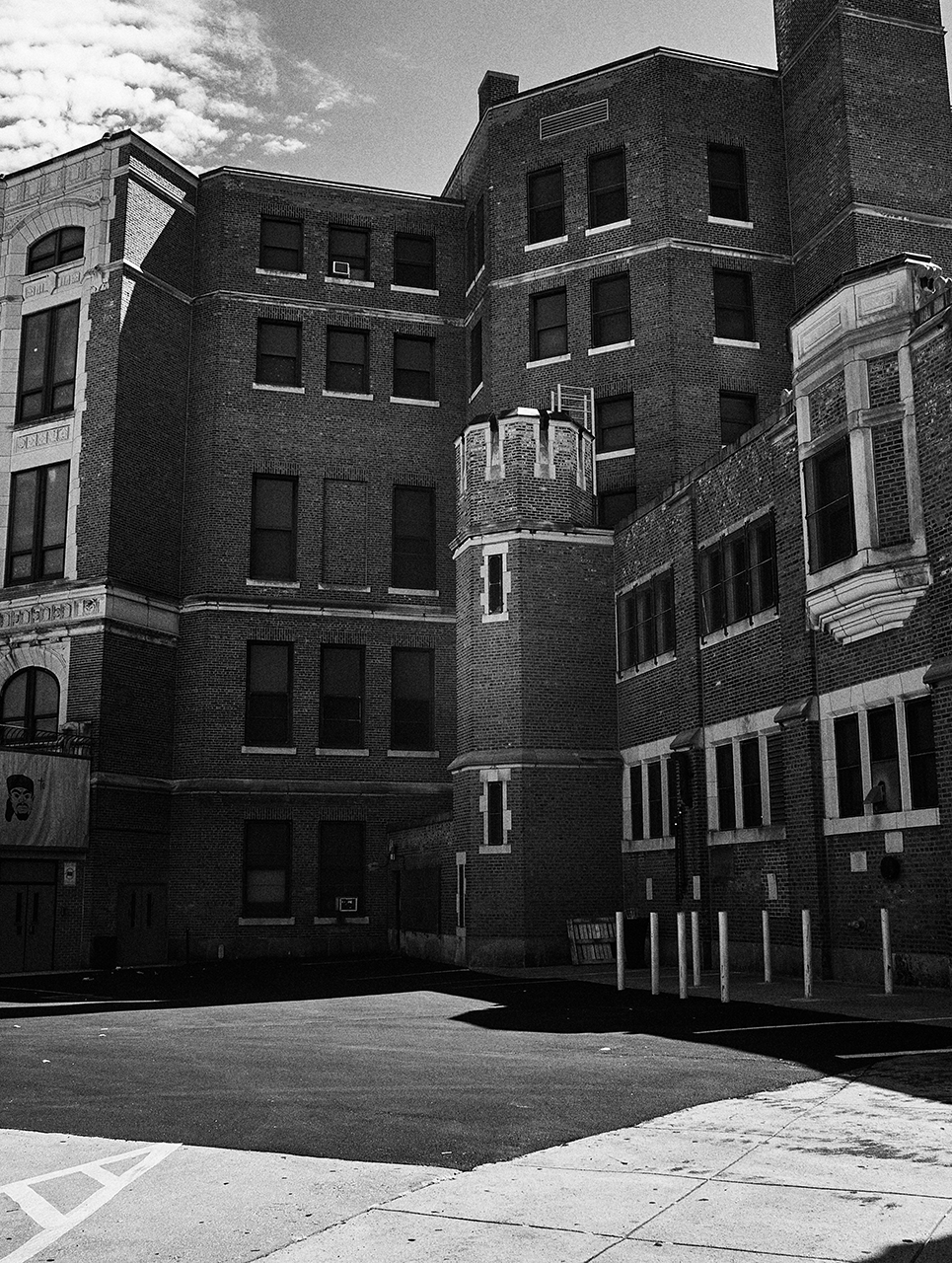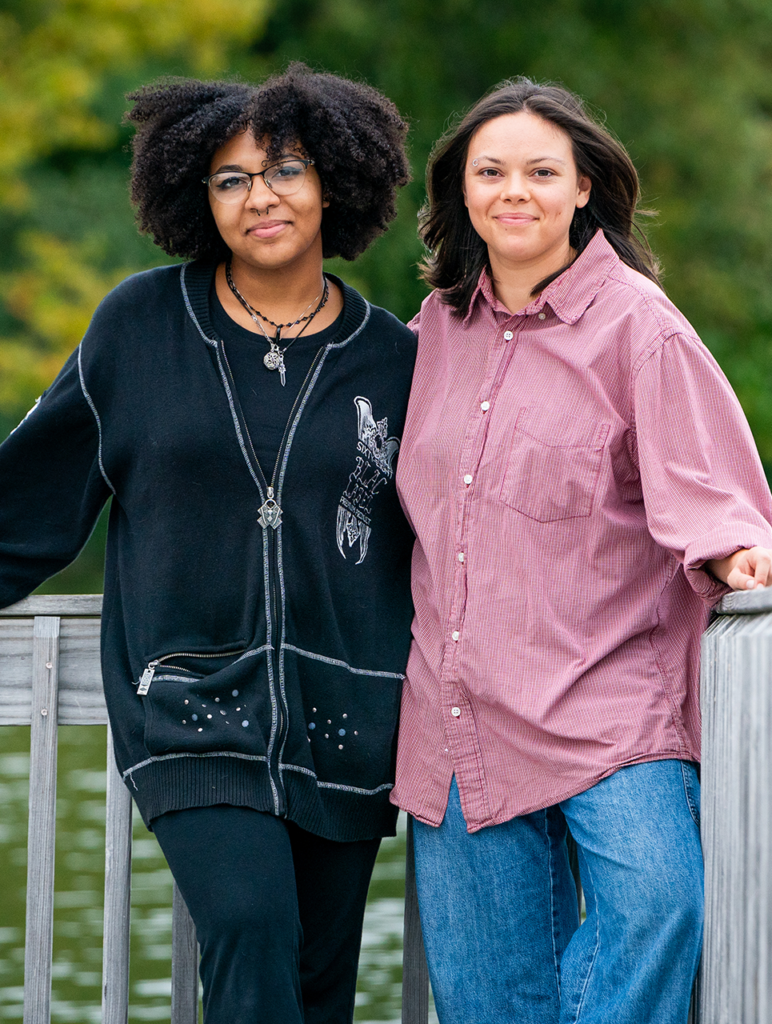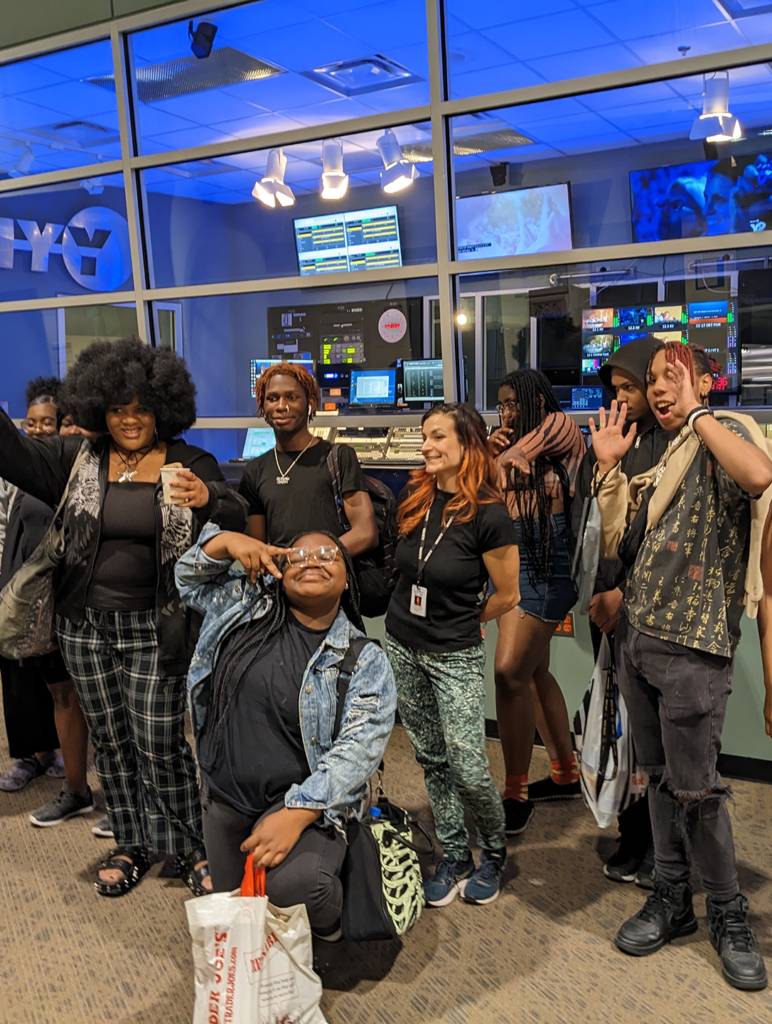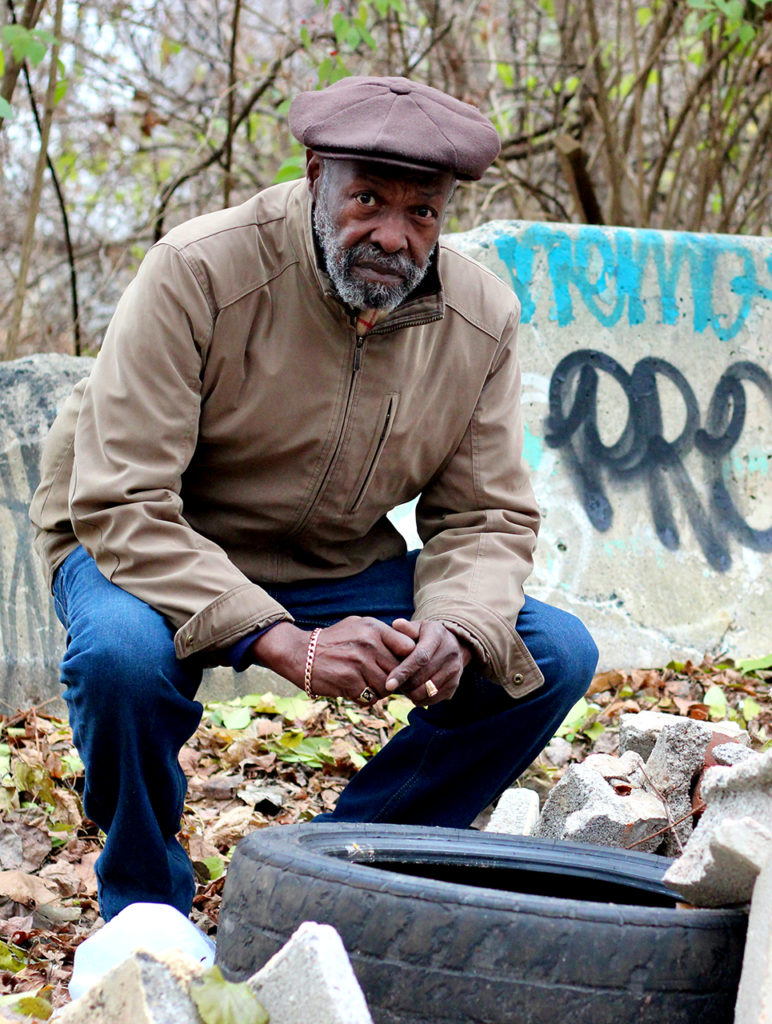Before her mother died in 2020 at age 46 of heart failure, complicated by diabetes, lupus and lung disease, Lelache Word (aka Lela), then 15, was living in Arizona with her mother, stepfather and step-siblings. Strapped by her mother’s staggering medical bills, the family sometimes slept in the car or hotels.
After her mother’s death, Word moved to her birth father’s home in Philadelphia to attend high school. What happened there sank her hopes. “My father drank heavily and was abusive,” says Word. “I would run away from home, stay with a friend, and at rare times, in a shelter. People steal there.”
Word became one of 40,003 Pennsylvania students experiencing homelessness, the number cited in a 2023 report published by the Pennsylvania Department of Education.
About one fourth of Pennsylvania’s public school students experiencing homelessness in the 2022-2023 school year lived in Philadelphia, with more than 10,000 with inadequate housing in the School District of Philadelphia, according to the district’s Education for Children & Youth Experiencing Homelessness (ECYEH), in the Office of Student Rights and Responsibilities. The number is likely below the actual total, according to ECYEH, which works to reduce or eliminate educational barriers to students experiencing homelessness.
Like Word, the majority of Pennsylvania young people living in inadequate housing are students of color, reports the Education Law Center (ELC). “Due to centuries of systemic racism and other pervasive forms of discrimination in housing … people of color in our country and [state] … are often prevented from accessing permanent, stable and adequate housing,” says ELC’s 2023 legal analysis on the rights of students experiencing homelessness.
The McKinney-Vento Homeless Assistance Act, passed by Congress in 1987, provides help for students experiencing homelessness, but school districts often struggle to identify these students. The situation can mean that students without stable housing continue living exposed to physical danger and without basic needs like healthcare. Several Philadelphia groups have stepped in to offer help.

The School District of Philadelphia follows the McKinney-Vento definition of homelessness, which includes living in hotels, motels, campgrounds, cars, trailer parks and public spaces such as train stations. Couch-surfing in friends’ homes or “doubling up” with relatives — the most common situation — also counts.
Each school assigns a McKinney-Vento liaison — often a school counselor, administrator or social worker — responsible for identifying young people experiencing homelessness and ensuring that McKinney-Vento requirements are met. Teachers may be the first to notice signs, such as many absences and frequently missing homework, that could mean a lack of stable housing, says Villanova University associate professor of education and counseling Stacey Havlik, a former middle school counselor who sometimes had contact with students experiencing homelessness.
Once found eligible under McKinney-Vento, students can receive enrollment assistance, uniforms and supplies, transportation support, emergency funds, clothing, academic and emotional-support services and other resources, says ECYEH.
Identifying McKinney-Vento eligible students is a school’s legal responsibility, but it can be a tough task. ELC staff attorney Paige Joki says it’s the chief roadblock to an education for students experiencing homelessness. “Many schools don’t use a universalized survey to determine if a student is McKinney-Vento eligible,” she says. “Also, when the student’s status is in dispute, that student should be treated as McKinney-Vento eligible until the dispute is resolved, including exhausting all appeals.” That doesn’t always happen, Joki says, meaning many students are deprived of education, resources and, possibly, the only stable place in the child’s life.
To further complicate matters, children’s parents and guardians may hide their housing status for fear that they will be reported to a child welfare agency, Havlik says. If they’re living with relatives due to loss of housing, they may not consider themselves homeless and remain unaware of potential support. For example, if their child needs glasses or hearing aids, the family could miss out on that assistance.
Some young people experiencing homelessness are entirely alone. “A … girl was kicked out of her home due to a conflict,” says Alyssa Weinfurtner, MSW, director of emergency services for Philadelphia at Valley Youth House. “She went from relative to relative, then found us,” Weinfurtner says.
In other cases, families throw out LGBTQ+ young people because of their sexuality or gender identity, according to The Trevor Project, a nonprofit focused on preventing the suicide of LGBTQ+ youth. These young people have “two to four times the risk of reporting depression, anxiety, self-harm, considering suicide and attempting it, compared with their peers with stable housing,” the organization’s February 2022 report says.
Students are deeply reluctant to say that they’re experiencing homelessness.”
— Melissa Tsuei, Thrive Project
Stigma often complicates matters too, says Melissa Tsuei, manager of the Thrive Project, a program of HopePHL, a nonprofit that offers housing, advocacy and trauma-informed social services to children, youth and families. Thrive works with the school district and provides housing for unhoused students. “Students are deeply reluctant to say that they’re experiencing homelessness,” Tsuei says. It’s not cool to be a homeless teen, as one teacher puts it.
“Lela is unusual in being transparent,” Tsuei says. That forthrightness helped her. One of Word’s friends witnessed her father being abusive to her and understood that Word needed to move in with her immediately. Thrive also assisted Word with information about youth and young adult housing.
Tsuei spoke of the importance of changing the narrative so that the public views homelessness not as a personal failure but as a systems failure — as a lack of support for families — which could reduce the shame and stigma of not having a home. It was Word’s family’s lack of medical access combined with the housing crisis that left them homeless, Tsuei says. “It is well-documented … that our systems are built for some and not for others.”
Once a student is found to be McKinney-Vento eligible, it pays to tackle basics first, Havlik says. “There is a hierarchy of need,” she says. “These young people need food, clothing and shelter before they can attend to learning.” Another researcher spoke of picturing a homeless preschooler trying to adjust to the newness of a classroom on an empty stomach.
Transportation is another major problem, according to Joki. “Students living doubled up may stay in three different places over the course of the week and require transportation from each place,” she says. “Or they may need specialized transportation. A disproportionate number of young people experiencing homelessness has a disability.”
McKinney-Vento also provides funds for tutoring, a key provision since young people experiencing homelessness are twice as likely to repeat a grade as compared to their adequately housed counterparts, says the National Child Traumatic Stress Network (NCTSN). “More than one-fifth of homeless preschoolers have emotional problems serious enough to require professional care, but less than one-third [of those who need it] receive any treatment,” NCTSN’s 2005 report says.
Word’s mother seems to have been perceptive in that respect. “My mother always made sure that we got [psychological] counseling,” Word says. In addition, Thrive referred Word to programs to support her physical and emotional health.
ELC’s Joki says that the McKinney-Vento Act requires that schools treat inadequately housed children with sensitivity — for example, guarding their privacy — but some schools go a step further, pairing students with teachers with whom they’ve formed a bond.
Word praised the behavioral health counselor at Strawberry Mansion High School. “Mr. Pedersen helped me pull myself together,” she says. “I was able to finish because of all of the teachers who supported me. Mrs. Pedersen [in Emotional Support] helped me too. I could go in her room and nap when I needed to.” Thrive staff members met regularly with the Pedersens, who are married, to discuss how best to help Word graduate on time.
Schools could also help by eliminating fees for things like replacing an ID or fines for not having a hall pass. “Sometimes students are penalized for having a cell phone when it’s the only way they can stay in touch with their family,” Joki says. “You want to remove barriers to students’ crossing the finish line.”
A cash crunch may limit McKinney-Vento’s effectiveness, some researchers believe. The funding stands at about $500,000 this year. “Some say that McKinney-Vento is aspirational in nature because there is not enough money to provide the services it calls for,” Havlik says.
In the past, the City has given low priority to helping children experiencing homelessness, says David Fair, executive director of Turning Points for Children, a nonprofit that serves vulnerable families. “Children and youth were an afterthought in the shelter system,” he says.
That situation may change, thanks to the hearing on homeless students in the school district convened on July 31, 2024 by City Councilmember-at-large Isaiah Thomas, chair of the Education Committee. “There’s … uncertainty with federal dollars running out,” he says, emphasizing that the city should develop a plan to aid children and youth experiencing homelessness, whose numbers could rise with the housing crisis. He promised more meetings on the topic and possible legislation.
Valley Youth House’s Weinfurtner spoke of large service gaps that could come about with federal funds provided during the COVID-19 pandemic about to expire. “We need to look at what other cities have done,” she says. “If a young person doesn’t finish high school, they’re four times as likely to experience homelessness in the future.”
Support can turn around the lives of unhoused young people, Havlik says. Students experiencing homelessness have the potential to be extremely successful, she says. “They are some of the most resilient students in the school system,” she says. “They get up, get to school and do their homework despite everything. It’s our job to remove barriers so that they can attend and be successful in school.”
Word’s plans seem to bear her out. “I want to attend college for psychology, then I want to get a beautician’s license,” she says. “People could come in [my shop] and get counseling and get their hair done. It’s to honor my mother. She always did her makeup, she was always glowing.”
How You Can Help
- Contact a nearby school to find out what supplies or services are needed for students experiencing homelessness and how to make donations.
- Volunteer as a tutor during school hours and through summer school programs.
- Call your councilperson and ask what they are doing to address family and youth homelessness, including ensuring access to affordable housing for unsheltered children.
- Call your state representative and senator and explain the importance of funding schools to meet the needs of students experiencing homelessness.
Where to Get Help
- If you, your child or someone you know is experiencing homelessness, see your school’s guidance counselor or your school district’s McKinney-Vento liaison.
- If you’re a Pennsylvania resident with questions about the law or your rights, contact the Education Law Center at (267) 541-3471.









